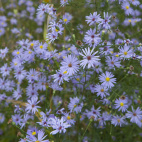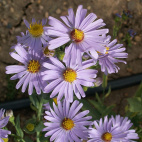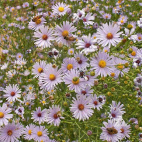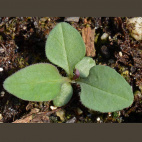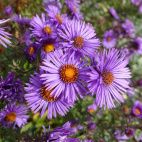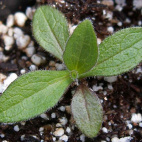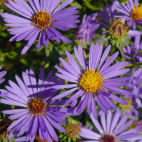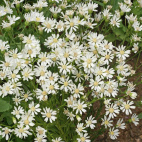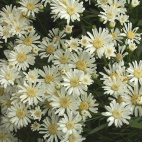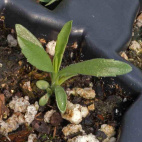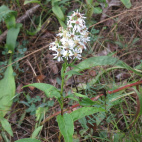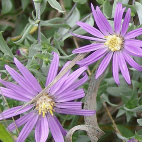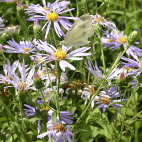Heath Aster Seeds
- HOW TO GROW
- FAST FACTS
- REVIEWS
HOW TO GROW
Sowing: Direct sow the Aster Ericoides seed in late fall or early spring, planting it on the surface, compressing the soil slightly, and watering it once. To start the seed indoors, sow it in a flat; keep the soil evenly moist and at a temperature of 65-70 degrees F until germination, which should take place within 14-20 days. Transplant the seedlings after the last frost of spring.
Growing: This plant prefers dry and or average soil, but also adapts well to rocky, shallow soil or clay. It tolerates heat and drought well, but will benefit from an occasional watering in especially dry weather. This plant tends to spread and reseed itself, forming a colony over time if volunteer plants are not removed. Plants may need support or staking. Mature plants will benefit from division after two or three years of growth. These flowers attract bees and butterflies, and resist deer.
Harvesting: Asters make lovely cut flowers. Cut the stems long, choosing flowers that have just opened.
Seed Saving: After flowering, the plant will produce seed heads containing small clusters of seed with white fluff. Since sparrows and goldfinches love to eat the seed, harvest it promptly to avoid loss. Cut the mature seed heads, or shake them into a container to remove the seed material. Clean the white heath aster seeds as well as possible, then store it in a cool, dry place.
FAST FACTS
Common Names: White Heath Aster, Squarrose White Aster, White Prairie Aster
Latin Name: Aster ericoides
Species Origin: US Native Wildflower
Type: Native Wildflowers
Life Cycle: Perennial
USDA Zones: 2, 3, 4, 5, 6, 7, 8, 9
US Regions: Mountain, Arid/Desert, Plains/Texas, Midwest, Northern, Northeast, Southeast
Seeds per Ounce: 200,000
Stratification: No Stratification
Germination Ease: No Stratification
Sunlight: Full Sun, Part Sun
Height: 24 Inches
Color: White
Bloom Season: Blooms Early Fall, Blooms Late Fall
Uses: Attracts Pollinators, Attracts Honeybees, Attracts Butterflies, Cut Flowers
Hope they grow here
Love the packaging. I won't plant these until late-fall/early-winter and then won't know until next year.
DESCRIPTION
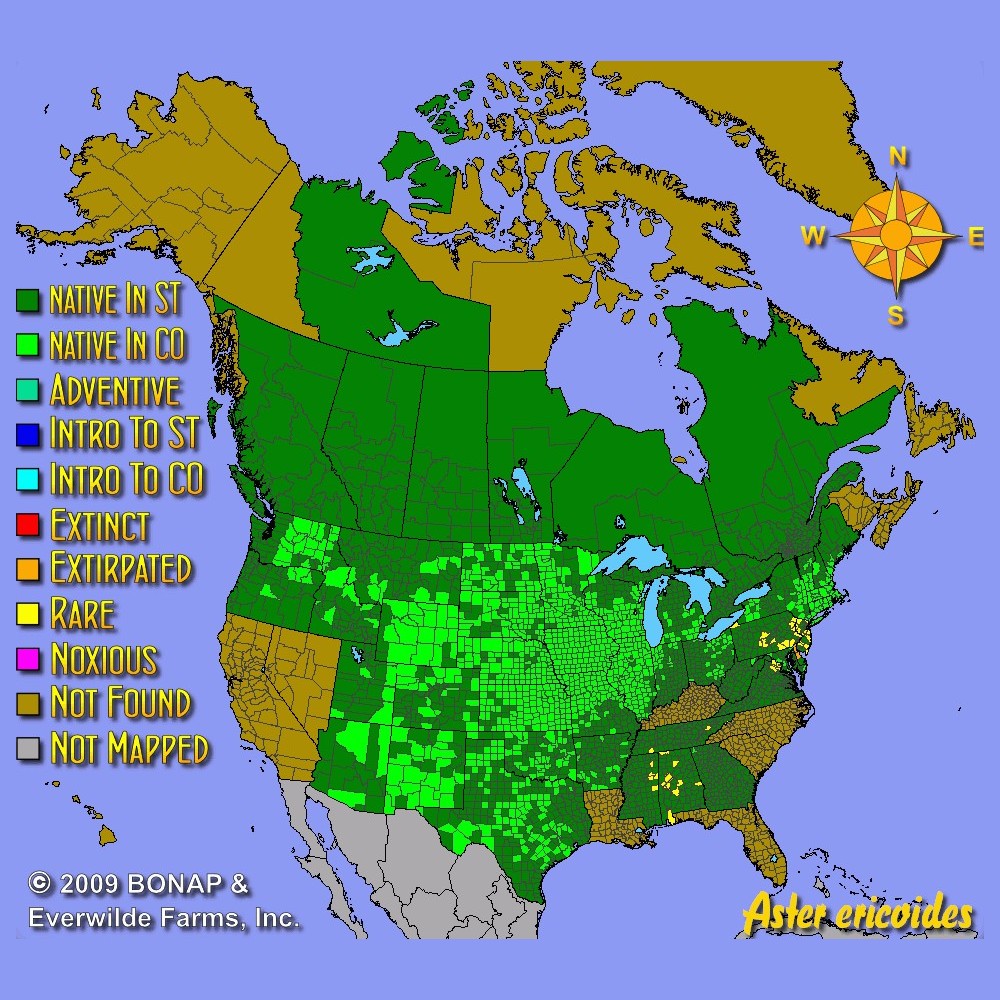
HOW TO GROW
Sowing: Direct sow the Aster Ericoides seed in late fall or early spring, planting it on the surface, compressing the soil slightly, and watering it once. To start the seed indoors, sow it in a flat; keep the soil evenly moist and at a temperature of 65-70 degrees F until germination, which should take place within 14-20 days. Transplant the seedlings after the last frost of spring.
Growing: This plant prefers dry and or average soil, but also adapts well to rocky, shallow soil or clay. It tolerates heat and drought well, but will benefit from an occasional watering in especially dry weather. This plant tends to spread and reseed itself, forming a colony over time if volunteer plants are not removed. Plants may need support or staking. Mature plants will benefit from division after two or three years of growth. These flowers attract bees and butterflies, and resist deer.
Harvesting: Asters make lovely cut flowers. Cut the stems long, choosing flowers that have just opened.
Seed Saving: After flowering, the plant will produce seed heads containing small clusters of seed with white fluff. Since sparrows and goldfinches love to eat the seed, harvest it promptly to avoid loss. Cut the mature seed heads, or shake them into a container to remove the seed material. Clean the white heath aster seeds as well as possible, then store it in a cool, dry place.
FAST FACTS
Common Names: White Heath Aster, Squarrose White Aster, White Prairie Aster
Latin Name: Aster ericoides
Species Origin: US Native Wildflower
Type: Native Wildflowers
Life Cycle: Perennial
USDA Zones: 2, 3, 4, 5, 6, 7, 8, 9
US Regions: Mountain, Arid/Desert, Plains/Texas, Midwest, Northern, Northeast, Southeast
Seeds per Ounce: 200,000
Stratification: No Stratification
Germination Ease: No Stratification
Sunlight: Full Sun, Part Sun
Height: 24 Inches
Color: White
Bloom Season: Blooms Early Fall, Blooms Late Fall
Uses: Attracts Pollinators, Attracts Honeybees, Attracts Butterflies, Cut Flowers
Reviews
Review
Hope they grow here
Love the packaging. I won't plant these until late-fall/early-winter and then won't know until next year.
Also Consider These:
-
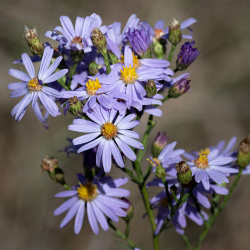 On Sale!
Sky Blue Aster Seeds
Aster azureus
These dainty, azure blue flowers will blanket a fall meadow in stunning beauty. A great source of pollen and nectar in the late fall. Also perfect for a vase or dried flower arrangement.Quick View$3.75 Pkt - $32.00 / Oz
On Sale!
Sky Blue Aster Seeds
Aster azureus
These dainty, azure blue flowers will blanket a fall meadow in stunning beauty. A great source of pollen and nectar in the late fall. Also perfect for a vase or dried flower arrangement.Quick View$3.75 Pkt - $32.00 / Oz -
 On Sale!
Smooth Blue Aster Seeds
Aster laevis
These bright blue flowers will add color to the autumn landscape. Unlike many asters, this variety produces perfectly smooth foliage and stems. This Aster is widely used in prairie restoration mixes.Quick View$3.75 Pkt - $15.95 / Oz
On Sale!
Smooth Blue Aster Seeds
Aster laevis
These bright blue flowers will add color to the autumn landscape. Unlike many asters, this variety produces perfectly smooth foliage and stems. This Aster is widely used in prairie restoration mixes.Quick View$3.75 Pkt - $15.95 / Oz -
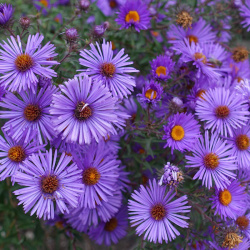 On Sale!
New England Aster Seeds
Aster novae-angliae
One of the most lovely and popular of the large asters, these fuschia flowers provide color for all of the autumn season. This variety is popular for prairie restoration projects because it provides a late-season source for pollen and nectar for our pollinator friends.Quick Viewx
On Sale!
New England Aster Seeds
Aster novae-angliae
One of the most lovely and popular of the large asters, these fuschia flowers provide color for all of the autumn season. This variety is popular for prairie restoration projects because it provides a late-season source for pollen and nectar for our pollinator friends.Quick ViewxNew England Aster Seeds
Aster novae-angliae
One of the most lovely and popular of the large asters, these fuschia flowers provide color for all of the autumn season. This variety is popular for prairie restoration projects because it provides a late-season source for pollen and nectar for our pollinator friends.
$3.48 Pkt - $22.17 / Oz -
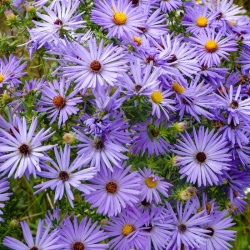 On Sale!
Aromatic Aster Seeds
Aster oblongifolius
Distinguished by its attractive balsam-scented foliage, this large Aster blooms very late in the fall. Though rather uncommon in the wild, this lavender variety usually grows in rough, dry ground or prairie soil.Quick View$3.75 Pkt - $48.00 / Oz
On Sale!
Aromatic Aster Seeds
Aster oblongifolius
Distinguished by its attractive balsam-scented foliage, this large Aster blooms very late in the fall. Though rather uncommon in the wild, this lavender variety usually grows in rough, dry ground or prairie soil.Quick View$3.75 Pkt - $48.00 / Oz -
 On Sale!
White Upland Aster Seeds
Aster ptarmicoides
Though not a true Aster, this plant is characterized by its profusion of white flowers. This variety does well in even the poorest, driest soil, and will provide some late-season color and nectar for winged garden visitors.Quick View$3.48 Pkt - $18.77 / Oz
On Sale!
White Upland Aster Seeds
Aster ptarmicoides
Though not a true Aster, this plant is characterized by its profusion of white flowers. This variety does well in even the poorest, driest soil, and will provide some late-season color and nectar for winged garden visitors.Quick View$3.48 Pkt - $18.77 / Oz -
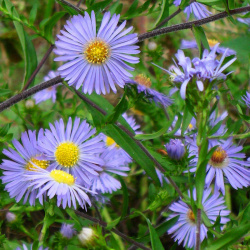 Swamp Aster Seeds
Aster puniceus
Found from northern Canada to southern Texas, this wildflower has one of the largest growing areas of any aster. The perennial usually grows in wetland or marshes, but will grow in average garden soil as well.Quick View$3.75 Pkt - $50.00 / Oz
Swamp Aster Seeds
Aster puniceus
Found from northern Canada to southern Texas, this wildflower has one of the largest growing areas of any aster. The perennial usually grows in wetland or marshes, but will grow in average garden soil as well.Quick View$3.75 Pkt - $50.00 / Oz -
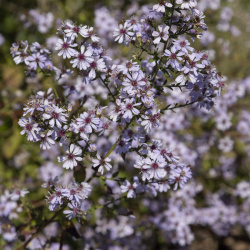 Arrow Leaved Aster Seeds
Aster sagittifolius
Delightful clusters of pale blue and lavender flowers add beauty to any planting in the fall season. Though no longer common in the wild, this Aster occasionally grows in open woodland areas or prairies.Quick View$3.75 Pkt - $54.00 / Oz
Arrow Leaved Aster Seeds
Aster sagittifolius
Delightful clusters of pale blue and lavender flowers add beauty to any planting in the fall season. Though no longer common in the wild, this Aster occasionally grows in open woodland areas or prairies.Quick View$3.75 Pkt - $54.00 / Oz -
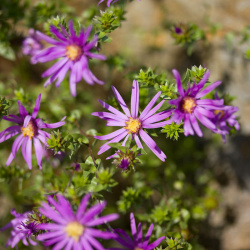 On Sale!
Silky Aster Seeds
Aster sericeus
Large flowers and attractive silvery foliage make this aster a popular choice for rock gardens and prairie plantings. The hardy, low-growing variety also distinguishes itself with unusual leaves, which feature fine white hairs.Quick View$3.96 Pkt - $64.00 / Oz
On Sale!
Silky Aster Seeds
Aster sericeus
Large flowers and attractive silvery foliage make this aster a popular choice for rock gardens and prairie plantings. The hardy, low-growing variety also distinguishes itself with unusual leaves, which feature fine white hairs.Quick View$3.96 Pkt - $64.00 / Oz -
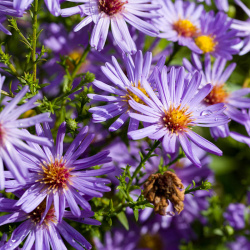 Out Of Stock
Showy Aster Seeds
Aster spectabilis
This New England native has become endangered in some states, though it can be found occasionally in coastal, sandy areas or open woods. Adaptability to almost any soil makes Aster Spectabilis an excellent choice for gardens or prairie plantings.Quick View$3.48 Pkt - $32.00 / Oz
Out Of Stock
Showy Aster Seeds
Aster spectabilis
This New England native has become endangered in some states, though it can be found occasionally in coastal, sandy areas or open woods. Adaptability to almost any soil makes Aster Spectabilis an excellent choice for gardens or prairie plantings.Quick View$3.48 Pkt - $32.00 / Oz






